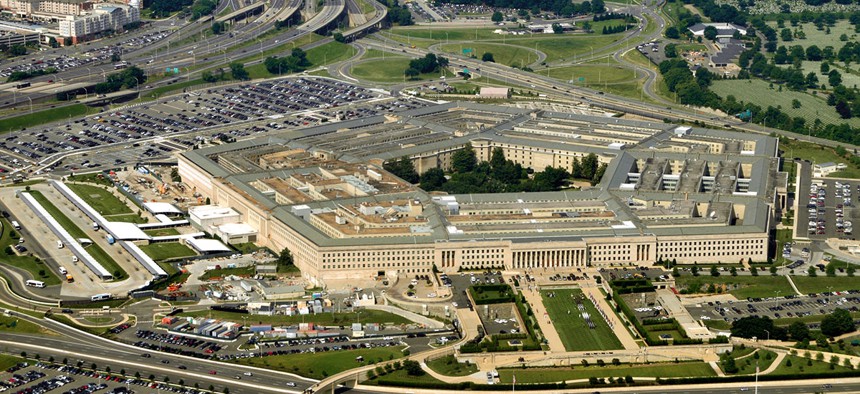Why Didn't Anyone See Leidos as the 'No-Brainer' Winner in Multibillion EHR Deal?

Frontpage/Shutterstock.com
New analysis reveals hallmarks that should have signified a clear-cut victory for the Leidos team.
Last summer, it was considered a major upset when defense IT firm Leidos and electronic health records vendor Cerner were awarded the Pentagon’s $9 billion health care modernization contract.
Yet, in hindsight, Leidos and Cerner – which topped the favored duo of IBM and commercial market leader Epic Systems and a third team composed of Computer Sciences Corp., HP and Allscripts – should have been favored all along to snag the Defense Healthcare Management System Modernization contract, according to an analysis by business intelligence firm Govini.
In the analysis, Govini broke down the past performance within the Defense Health Agency of DHMSM’s competing vendors and found hallmarks that should have signified a clear-cut victory for the Leidos team.
Before the Pentagon announced the award, many contract-watchers thought the rival IBM/Epic team would win the deal.
“But when we looked at the data backwards and forensically analyzed it, it makes complete sense that the Leidos team won,” said Arun Sankaran, managing director of Govini, in an interview with Nextgov.
(Govini and Government Executive Media Group have a data-sharing partnership, and earlier this month released the 2016 Federal Scorecard, an annual ranking of government contractors based on more than 6,000 data points.)
Govini’s “big data approach” makes it easier to visualize contract spend data over time, Sankaran said. That deep-dive look revealed far from being an underdog, Leidos was actually “the clear leader” in health IT vendors within DHA, earning about $1 billion in business.
For example, DHA paid more money to Leidos than any other single IT vendor on three of the five key IT contracts within the agency, including its Defense Medical Information Systems/Systems Integration, Design, Development, Operations and Maintenance Services, the Alliant contract and NIH CIO-SP2.
On the General Services Administration’s Schedule 70 contract, where all three vendors are positioned, Leidos’ capture total of $167 million significantly bested both IBM and HP’s captures by at least $50 million.
Data Doesn’t Lie
Whereas some analysts were swayed by IBM’s highly touted health records team and public relations effort – Leidos did not release as much as a single press statement in the award build-up – Sankaran said the contract data didn’t lie.
Leidos and spinoff SAIC “were everywhere” in DHA, he said, and their health records developer, Cerner, was better positioned in government than Epic. Cerner had millions of dollars’ worth of business with agencies like DHA, Army, Navy and the departments of Veterans Affairs and Health and Human Services. That likely suggested interoperability with various medical systems – a key component sought after by DHMSM contracting officials.
Epic, meanwhile, had far less business within DOD and most of its captured dollars within the Homeland Security Department.
“All the markers pointed toward Leidos and Cerner, with past performance and knowing how the government buys,” Sankaran said. He added: “Cerner was bigger in the federal government. It was almost a no-brainer.”
The government’s interest in vendors’ past performance is not new, but recently contracting officials have put a renewed emphasis on it.
This summer, the Alliant II governmentwide contracting vehicle will base 40 percent of its evaluation on past performance, meaning contractors who’ve dealt well with government before have an immediate leg up in competition against those that have not.
This process builds off the approach GSA used in 2013 for its One Acquisition Solution for Integrated Services contracts, which was validated after bid protests from vendors could not topple it.



